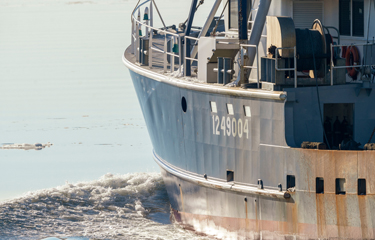A federal court has ruled in favor of an Oceana challenge to National Marine Fisheries Service (NMFS) rules regarding the incidental take of endangered sea turtles in the U.S. Atlantic scallop fishery, siding with the nonprofit in its assertion that the rules are inadequate.
The ruling, according to Oceana, is the latest in a “decades-long effort” by the nonprofit to ensure the scallop fishery “minimizes its harmful impacts on sea turtles.” The ruling will require the NMFS to revise its incidental take statement (ITS) to either more thoroughly explain the surrogate information, or revise its selections.
“The court directs NMFS either to more clearly explain whether there is a correlation between the dredge hour surrogate and the numerical take limit, and its selection of 359,757 dredge hours or, if unable to do so, to select a more appropriate surrogate or other mechanism for monitoring loggerhead takes resulting from dredge fishing,” the ruling’s conclusion states. “The court also directs NMFS to explain the discrepancy between its briefing in this Court and the second revised ITS regarding the reliability of the bycatch estimates for sea turtles from the dredge fishery. An order consistent with this opinion shall issue this same day.”
Oceana’s argument was that the method used by the NMFS to monitor the amount of incidental take of threatened and endangered sea turtles, and thus ensure the fishery does not exceed the allowed take of the species, was inadequate.
“Oceana successfully argued that the monitoring methods used by the government relied on unproven and invalid assumptions about the relationship between the number of hours that fishing boats are fishing and number of sea turtle interactions,” an Oceana release stated. “Because this approach is not valid, it does not provide a means to monitor interactions or trigger a response and could allow excessive takes to occur, possibly jeopardizing existence of the sea turtle species in the U.S. Mid-Atlantic and New England regions from North Carolina to Massachusetts.”
Oceana had made a similar argument before, and the NMFS had revised its earlier method for calculating incidental take. However, Oceana argued that the revision wasn’t enough, and the court agreed.
“In doubling down on the explanation that the court already found insufficient, NMFS has failed to address the specific issues remanded by the court, as it is required to do,” the court states.
At its core, the ruling means the NMFS needs to go back to the drawing board, and establish sufficient rules to ensure the Atlantic scallop fishery is not having detrimental impacts on endangered sea turtles in order to meet the requirements of the Endangered Species Act.
“Sea turtle bycatch in commercial fisheries represents a clear threat to the survival of these species, and it is critically important that the government set meaningful limits on these interactions and monitor the fishery to know if and when a limit is reached,” Oceana Campaign Director Whitney Webber said. “Once again, the courts have found that the federal government is not doing enough to oversee the U.S. scallop fishery and again has directed the government to do more. Oceana is optimistic that, with court oversight, the government will finally take this job seriously and find a path forward for the lucrative scallop fishery and sea turtles to co-exist in the U.S. Atlantic.”
Photo courtesy of Dan Logan/Shutterstock







